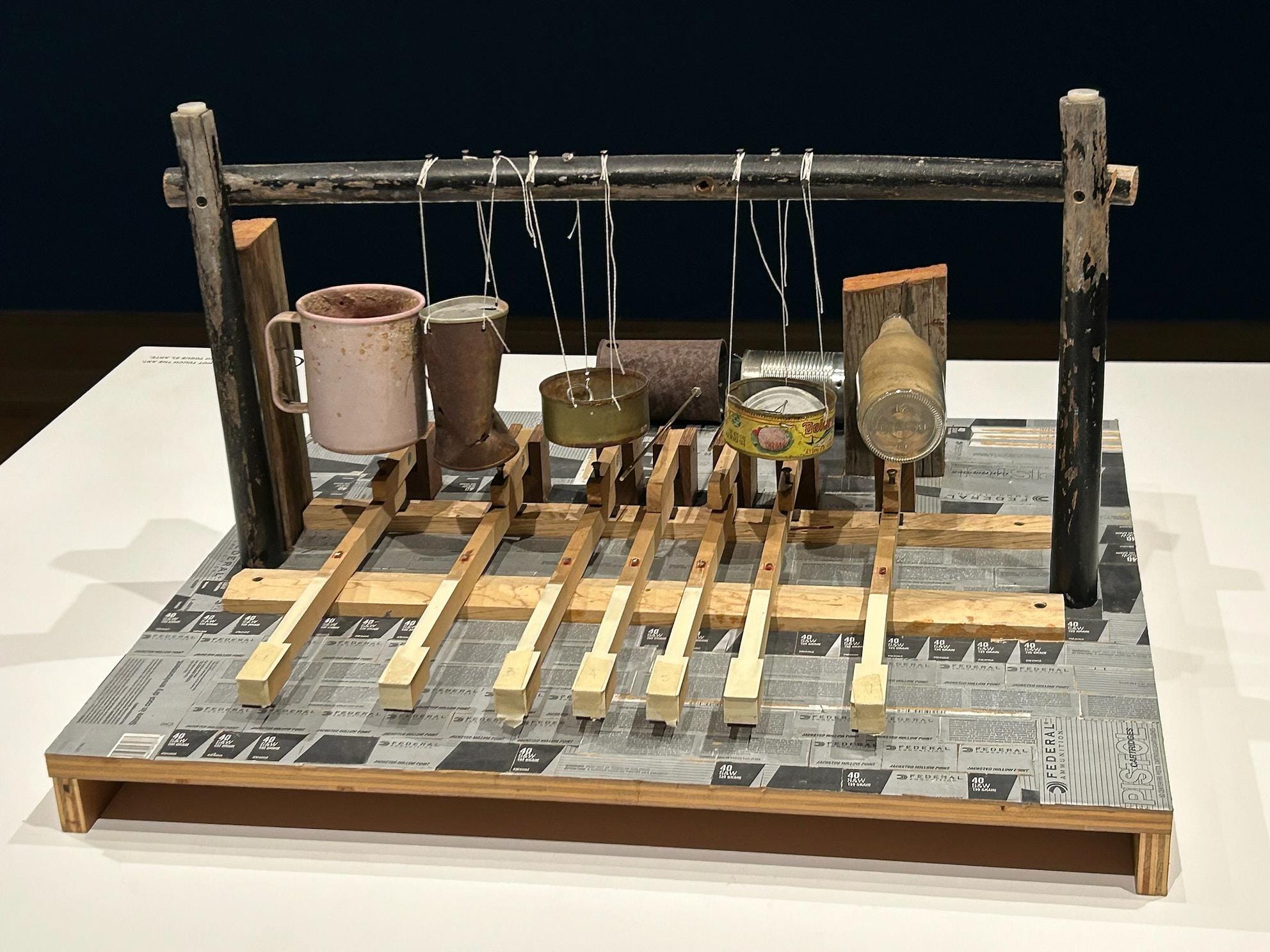Uncharted Ways Through: Maps, Land, and the Image
Grand Rapids Art Museum
Grand Rapids, Mich.
Through April 7, 2024
Border Cantos | Sonic Border
Grand Rapids Art Museum
Grand Rapids, Mich.
Through April 28, 2024
Two current exhibitions at the Grand Rapids Art Museum contend with space and place; one examines maps as a visual tool to drive narrative and one contends with the implications of maps and their borders.
“Uncharted Ways Through: Maps, Land and the Image” jumps off from the notion of maps as narrative vehicle. “Maps tell stories,” says the exhibition’s opening statement. The show, for its petite size, shows an impressive curatorial breadth that involves map comparisons that highlight differences in the perspectives and objectives of the creators, the incorporation of maps as a visual element in other works, and the utility of maps as a part of the art process. Installed at the end of the exhibit is an interactive room that invites attendees to explore their own relationships with maps, space and stories of travel, be it metaphorical in descriptions of divorce or existential wandering to the more literal, in the form of describing Google Maps as one’s “arch nemesis.”
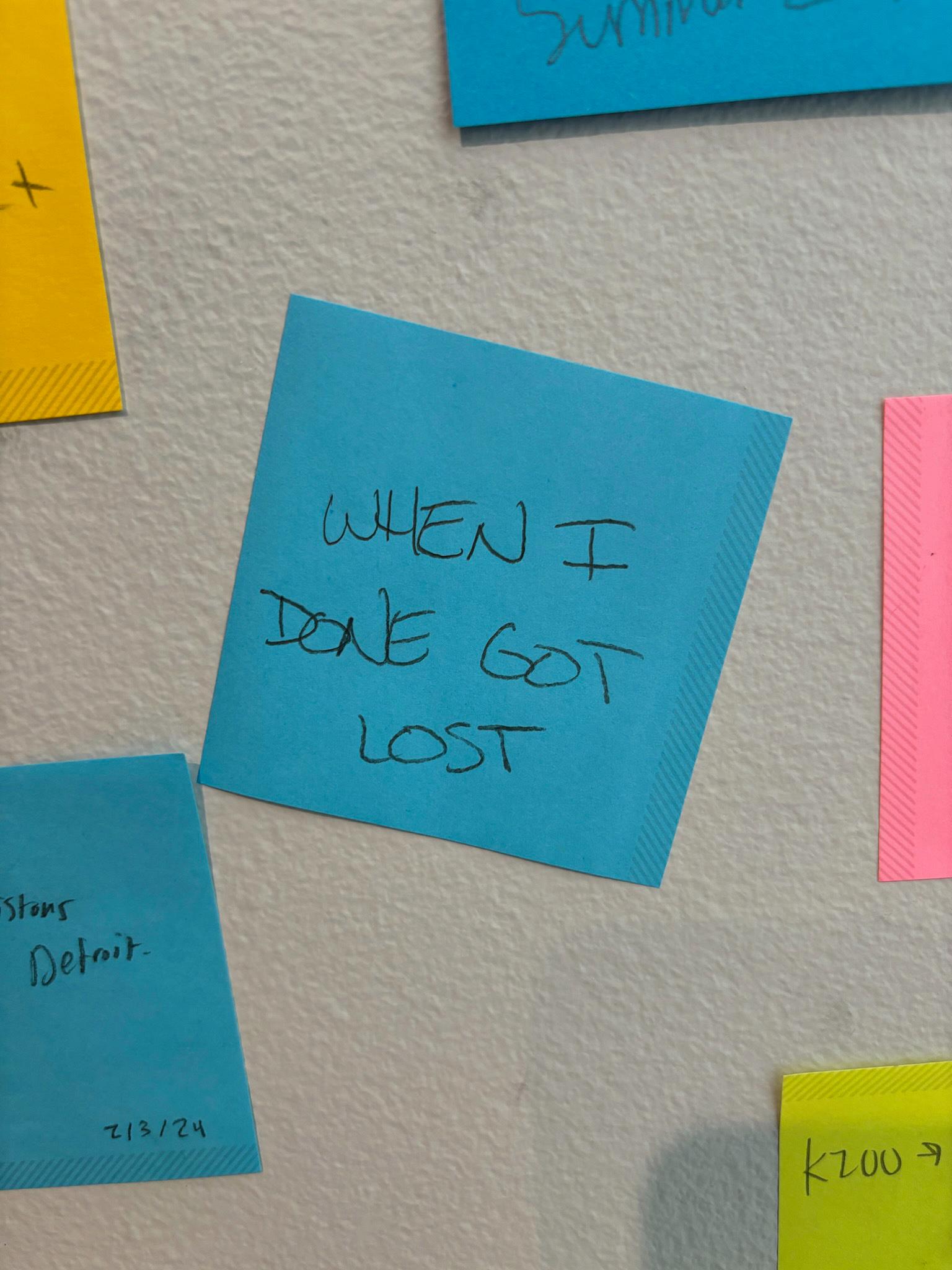
“Border Cantos | Sonic Border” is more narrow in scope, meditating on the experiences of migrants seeking to cross the U.S./Mexico border and showcasing only photographer Richard Misrach and multimedia artist Guillermo Gallindo, who have a unique method of collaboration, with Misrach photographing border areas and collecting ephemera and travel detritus from which Gallindo makes unique and uncanny instruments evoking the seemingly endless expanse of desert that is more dangerous than a vigilante border patrol or an unscrupulous coyote.
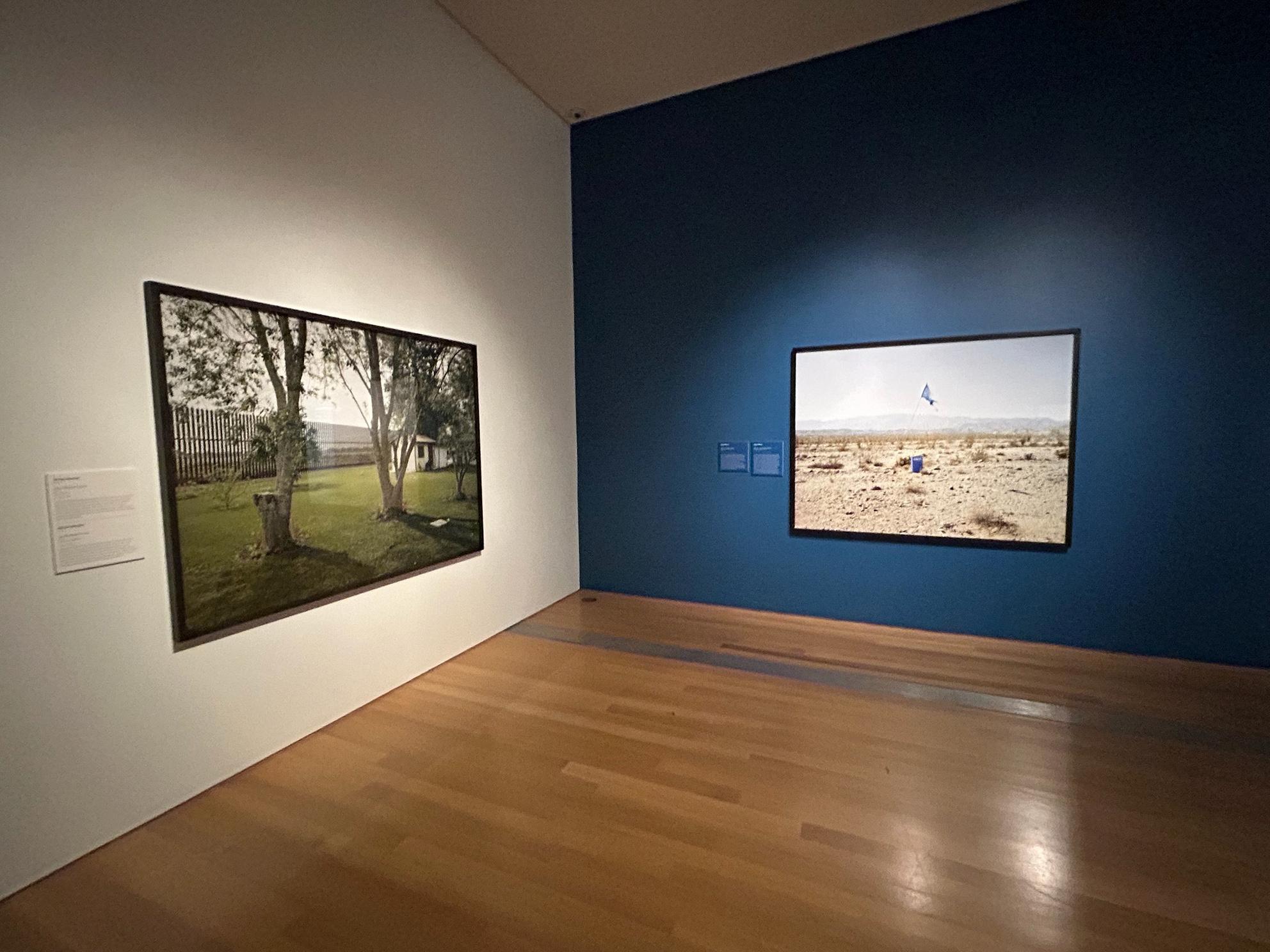
In “Uncharted Ways Through,” the viewer first encounters a juxtaposition of two French maps of early colonial Africa with a relatively recent (mostly) postcolonial map of Africa from a meeting of the Organization of African Unity in 1975. The joining of these images contrasts the perspectives of each map maker. The OAU map is presented on a poster for the event, whereas the French maps are situated among themselves.

Engaged with the idea of place from hyper-local — the park out front — to abstracted maps and infographics, to maps as a blueprint in making art, “Uncharted Ways Through” manages to juxtapose an incredible variety of media and eras of artmaking in a relatively small gallery space. Its centerpiece, and in many ways the linchpin to the exhibition, is Jerry’s Map, an iterative collage and mixed media “map” of nothing that still bears the classic marks of cartography: clear borders, geographic features, even some elements of architectural drawing. On display is only a portion of the over 1,500-foot work, redone panel by panel to simulate urban growth. The effect is of bearing witness to an expansive cartographical grid to nowhere.
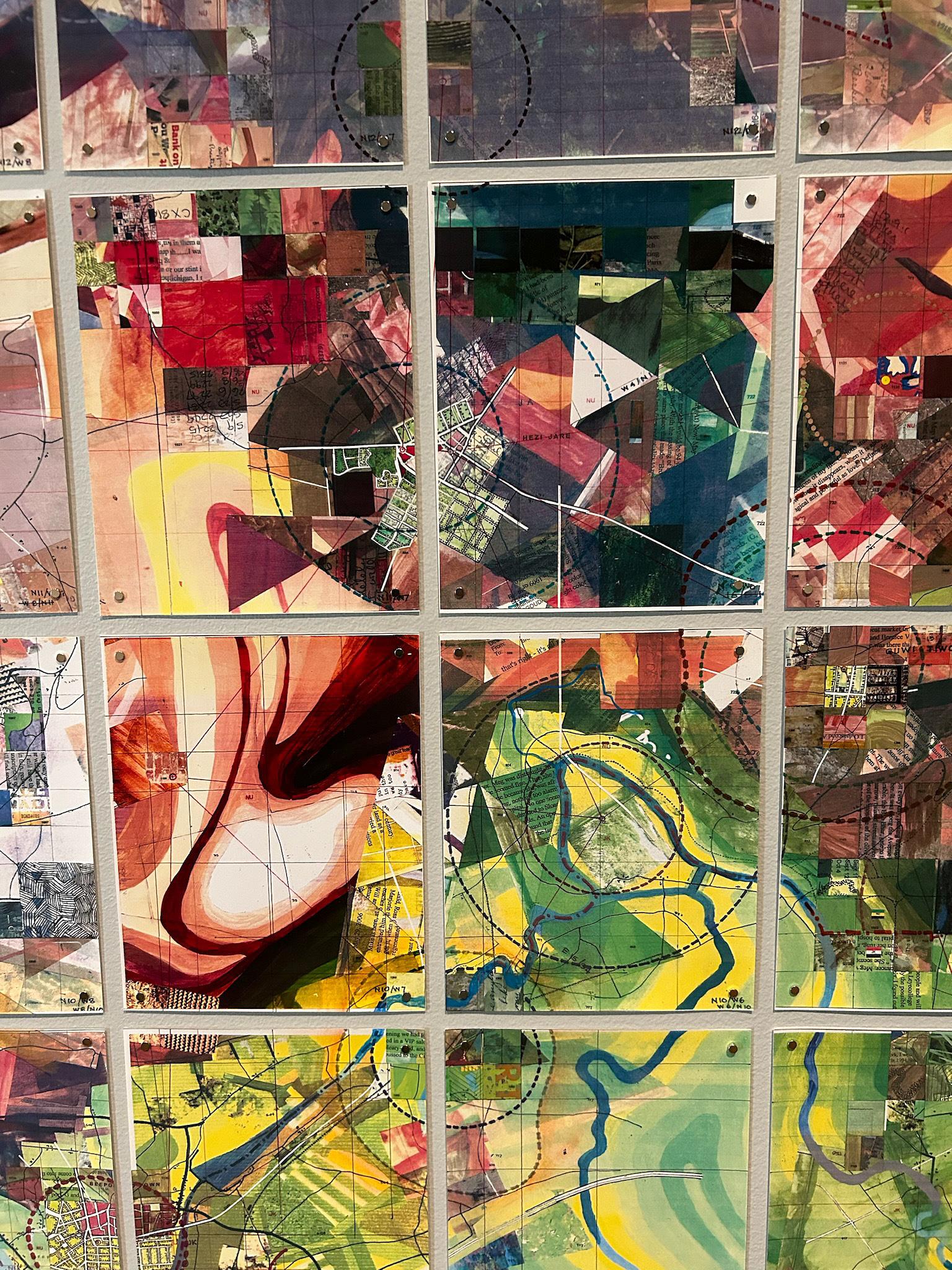
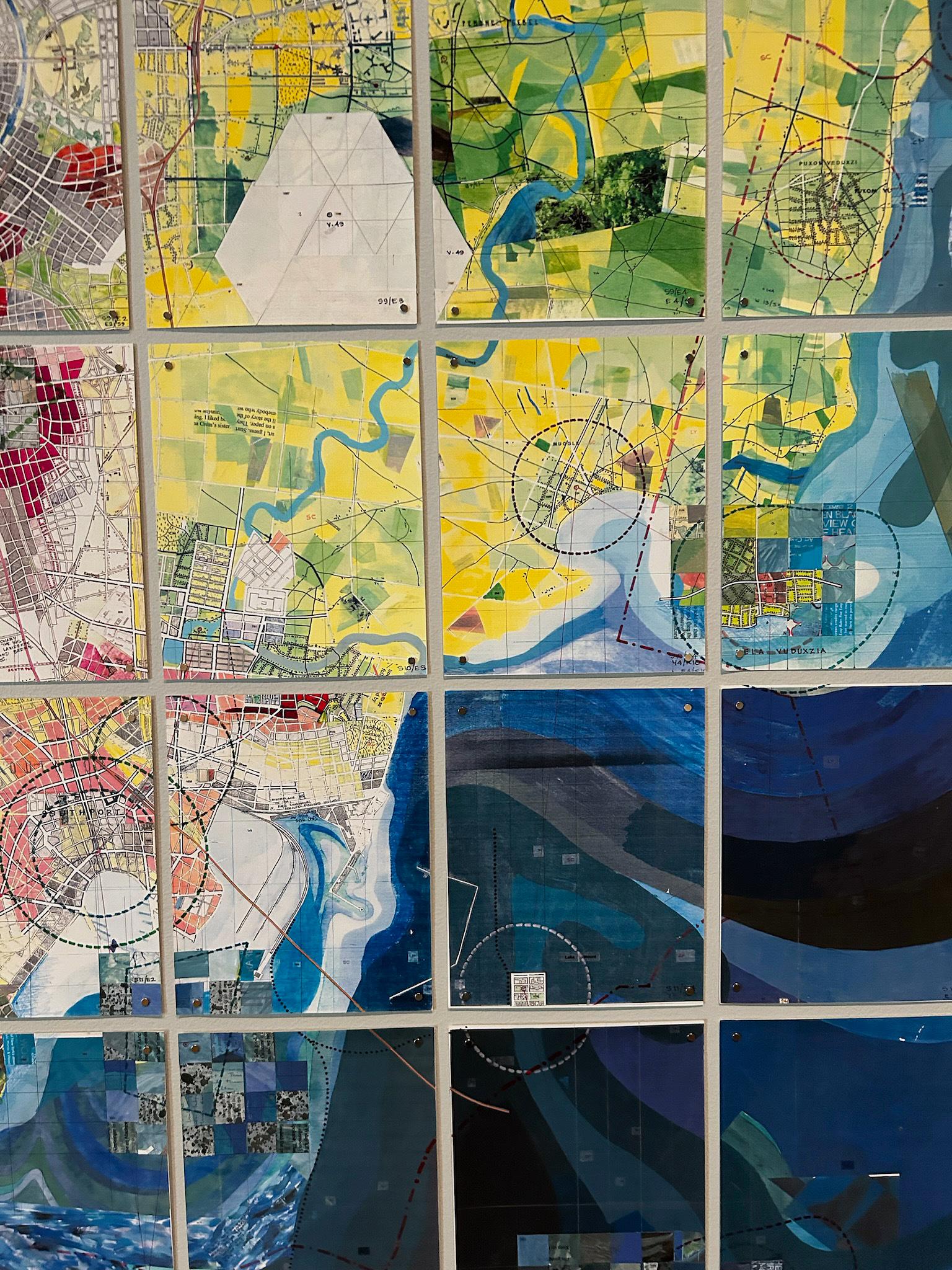
After the relative cartographic chaos, the orderly uniformity of “Border Cantos” — with a stark gallery of large-scale photos of borderlands between the U.S. and Mexico — proves a tone shift. Dusty roads vanish into perspective points, giving a zoomed-out sense to just how much the border wall disrupts the natural landscape. Some images are impersonal, others more foreboding; one such photo depicts a firing range and an ocean of spent shotgun shells.
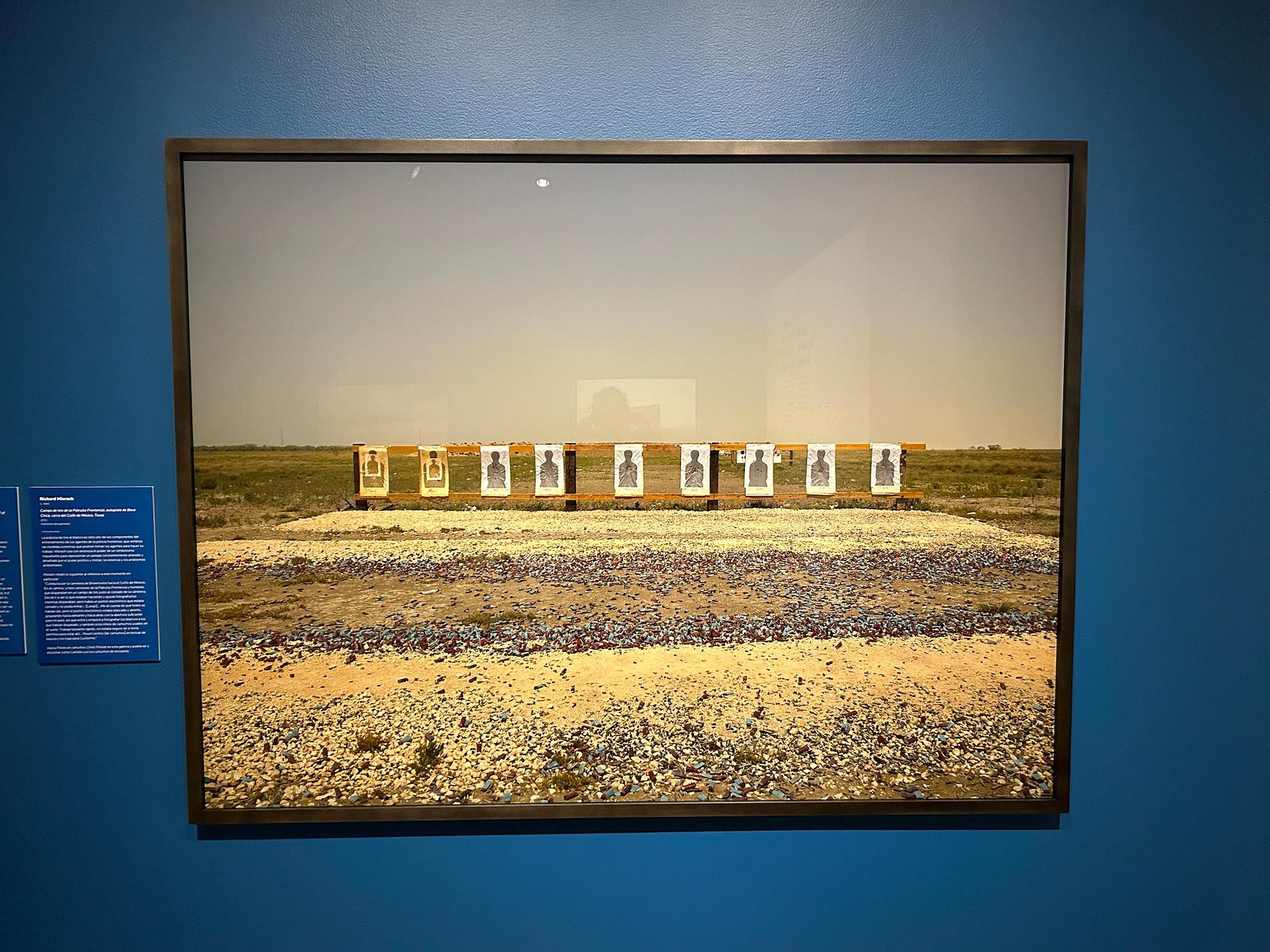
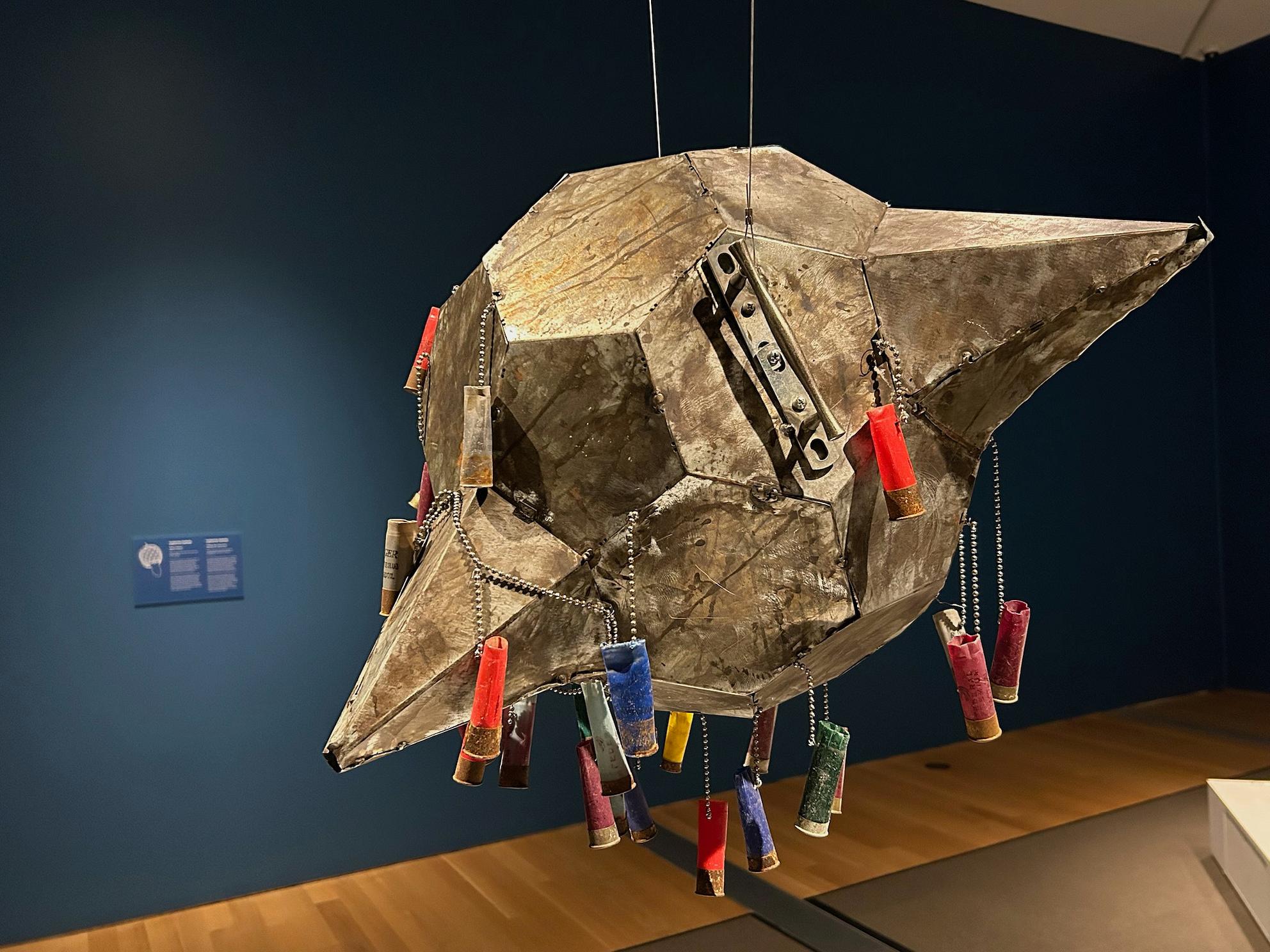
The second part of the exhibition, however, takes all that emptiness and turns it into a song full of the life that passes through the border. Many objects in the photographs, seemingly small among the vastness of the southern border, are brought to the fore remade as musical instruments. The second room of the gallery creates a composition in the round of art objects in the form of instruments: spent shotgun shells now adorn a piñata; a found “effigy” is strung with guitar strings, a cast-away bottle of Pedialyte becomes a pediaflute. Standing in the center, one can listen to a composition by Gallindo using all the instruments, a full 260 minutes long.
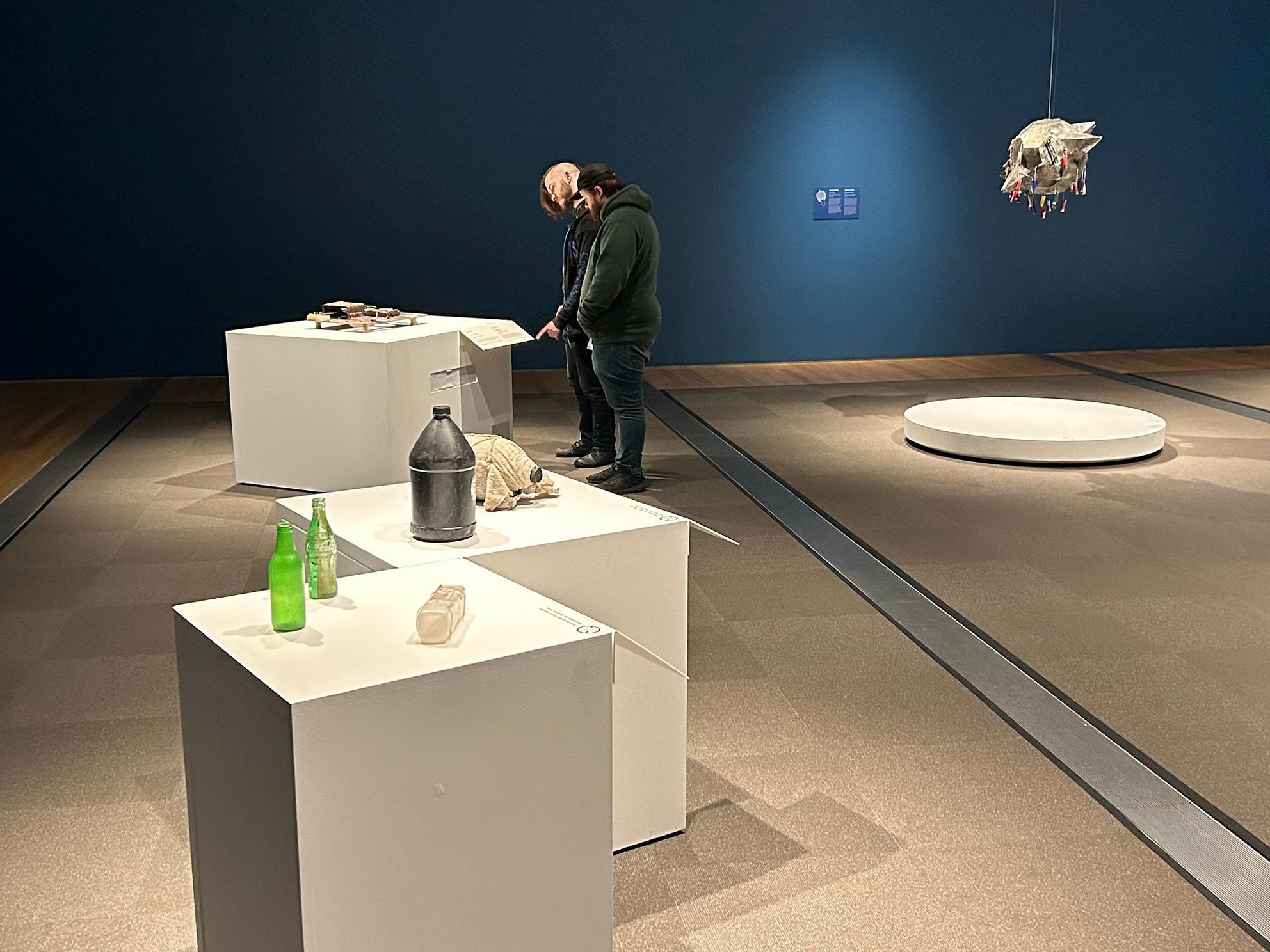
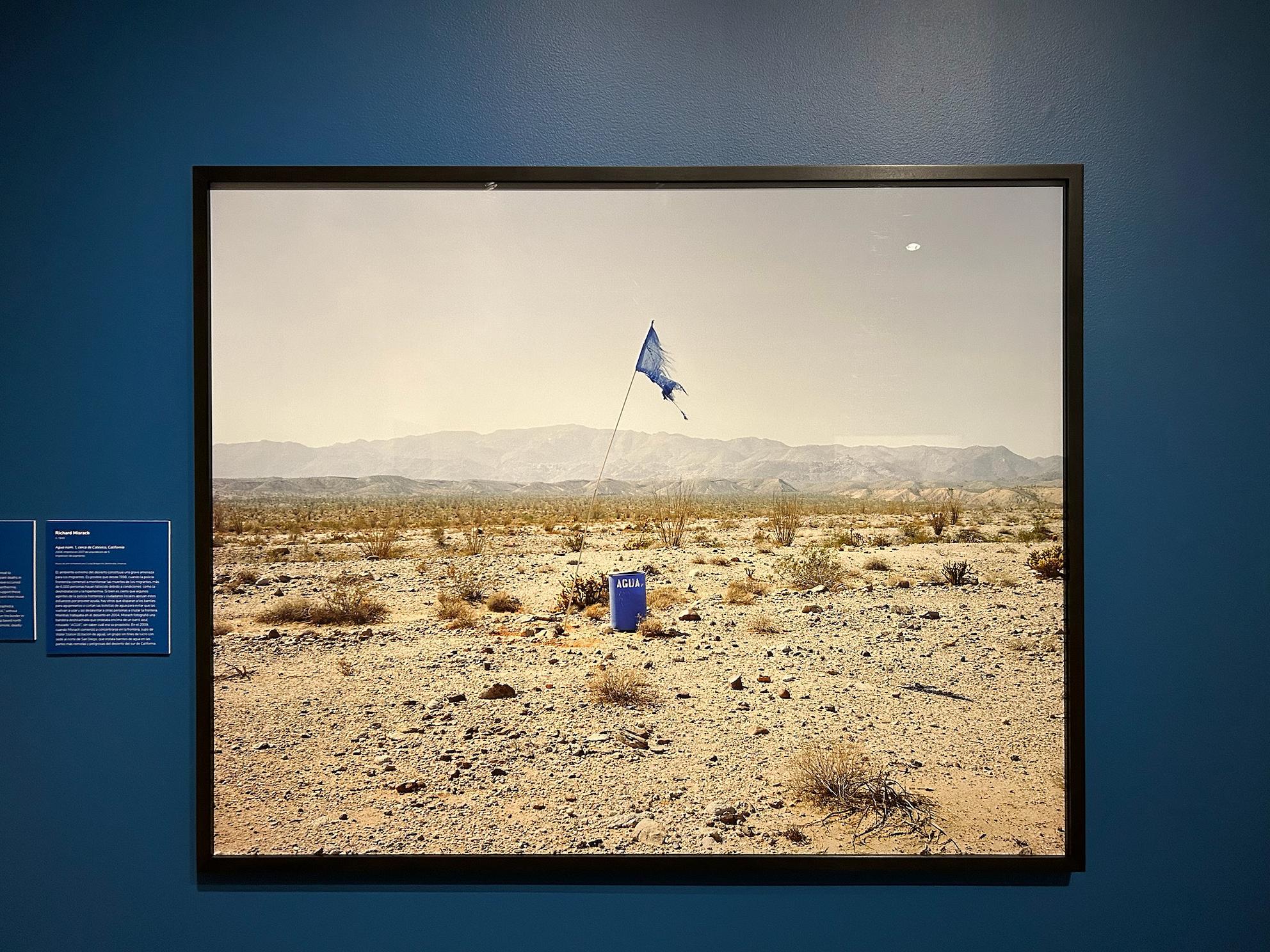
To experience one exhibit in dialogue with another while wandering the GRAM is to really meditate on how maps are incredibly useful tools — with frequently violent consequences.
